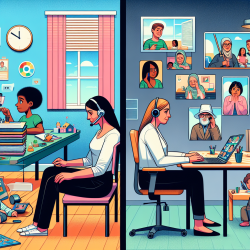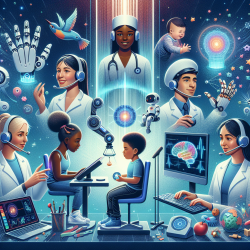Introduction
The transformation of the Autism Pediatric Research Network into a Learning Health System (LHS) presents valuable insights for practitioners seeking to enhance their skills and improve outcomes for children with Autism Spectrum Disorder (ASD). The research article "Transforming an Autism Pediatric Research Network into a Learning Health System: Lessons Learned" offers a comprehensive overview of this transition, highlighting the benefits and challenges faced by the Autism Speaks Autism Treatment Network (ATN)/Autism Intervention Research Network on Physical Health (AIR-P).
Understanding the Learning Health System Model
The Learning Health System model is designed to continuously improve healthcare outcomes by integrating clinical care, informatics, and culture. It emphasizes the importance of data-driven decision-making and collaboration among stakeholders, including patients, families, clinicians, and researchers. By transitioning to an LHS, the ATN/AIR-P aimed to accelerate the translation of research findings into practice and improve the health and well-being of children with ASD.
Key Lessons for Practitioners
Practitioners can apply several lessons from the ATN/AIR-P's transition to an LHS to enhance their practice:
- Embrace Continuous Improvement: The LHS model encourages a focus on long-term outcomes and continuous improvement. Practitioners should adopt a mindset of ongoing learning and adaptation to improve care for children with ASD.
- Engage Families as Partners: The transition highlighted the importance of engaging families as active partners in the care process. Practitioners should foster open communication and collaboration with families to better understand their needs and preferences.
- Utilize Data for Decision-Making: Data collection and analysis are central to the LHS model. Practitioners should leverage data to inform treatment decisions and evaluate the effectiveness of interventions.
- Focus on Co-Occurring Conditions: The ATN/AIR-P's work emphasized the need to address co-occurring medical conditions in children with ASD. Practitioners should consider the holistic needs of their patients and collaborate with other healthcare providers to deliver comprehensive care.
Encouraging Further Research
The transition to an LHS also underscores the importance of ongoing research to identify best practices and improve outcomes for children with ASD. Practitioners are encouraged to engage in research activities, collaborate with academic institutions, and stay informed about the latest developments in the field. By participating in research networks and quality improvement initiatives, practitioners can contribute to the advancement of knowledge and the development of evidence-based practices.
Conclusion
The transformation of the ATN/AIR-P into a Learning Health System offers valuable insights for practitioners seeking to enhance their skills and improve outcomes for children with ASD. By embracing continuous improvement, engaging families as partners, utilizing data for decision-making, and addressing co-occurring conditions, practitioners can make meaningful contributions to the care of children with ASD. To further explore the research and lessons learned, practitioners are encouraged to read the original research paper.
To read the original research paper, please follow this link: Transforming an Autism Pediatric Research Network into a Learning Health System: Lessons Learned.










